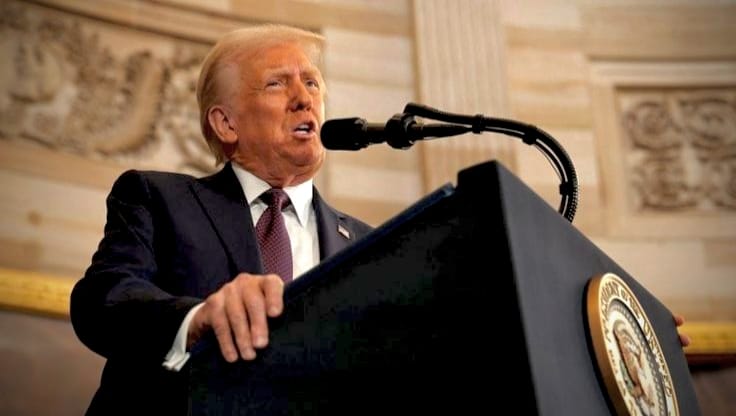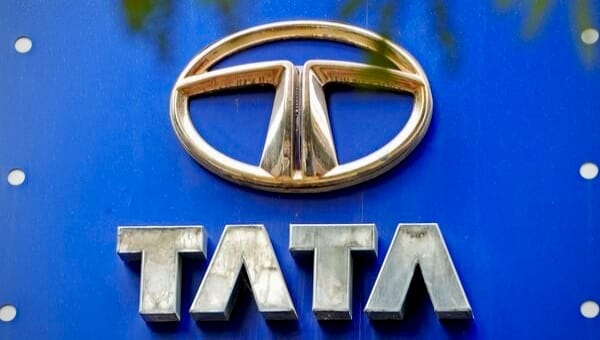
A potential policy announcement from former US President Donald Trump has sent shockwaves through global pharmaceutical stock markets, proposing a staggering 100% tariff on branded drugs manufactured abroad. The move, aimed at compelling drugmakers to relocate manufacturing plants to the United States, caused an immediate and sharp downturn in pharma stocks, with Indian pharmaceutical giant Sun Pharma seeing its stock plunge by 2.4%. This threat casts a long shadow over an industry deeply reliant on global supply chains and the vast American consumer market, which was valued at over USD 602 billion in 2023, according to research from Magnet ABA.
A New Storm Brews Over Global Pharmaceuticals
Trump’s Tariff Threat: An “America First” Approach to Drug Pricing
The proposal by Donald Trump represents a direct application of his “America First” trade philosophy to the pharmaceutical sector. By threatening a 100% tariff on branded drugs not made in the US, the policy intends to pressure international drugmaker companies to onshore their production. The core argument presented is that such a move would lower the price for the American consumer and bolster domestic manufacturing, tackling two key political issues simultaneously.
Immediate Market Reaction: Sun Pharma’s Plunge and Broader Industry Jitters
The market’s response was swift and negative. Stock markets reacted with alarm, particularly in India, a major hub for pharmaceutical exports to the US. Sun Pharmaceutical Industries Ltd., a leading Indian drugmaker, saw its stock fall 2.4%, erasing significant market capitalization. This decline was not isolated; it signaled broader investor anxiety about the potential disruption to the established global pharmaceutical trade, impacting the entire sector.
Setting the Stage: Why This Tariff Targets Branded Drugs and its Far-Reaching Implications
The policy specifically targets “branded drugs,” which are typically newer, patent-protected medications that command a high price. This focus is strategic, as these products represent a significant portion of pharmaceutical spending. The implications are vast, threatening the revenue models of companies heavily invested in research and development and potentially reshaping where innovative medicines are produced and sold globally.
Deconstructing the Policy: What a 100% Tariff on Branded Drugs Entails
Defining “Branded Drugs” in the Context of the Proposed Tariff
In this context, “branded drugs” refer to pharmaceuticals sold under a specific brand name by the company that developed them. These drugs are protected by patents, preventing other manufacturers from producing generic equivalents for a set period. A 100% tariff would effectively double the import cost of these high-value medicines, making them prohibitively expensive unless manufactured within the US.
The Stated Rationale: Addressing Drug Prices and Boosting US Manufacturing
The public rationale behind the proposed US tariffs is twofold. First, it aims to force a reduction in the drug price for American patients by eliminating reliance on foreign manufacturing. Second, it seeks to revitalize the US manufacturing base, creating jobs and ensuring a secure domestic supply of critical medicines. This policy ties healthcare affordability directly to trade and industrial strategy.
Historical Precedent: Understanding US Tariffs and Trade Tensions in Healthcare
While a 100% tariff is exceptionally high, it follows a pattern of using trade policy to achieve domestic goals. Previous administrations have engaged in trade disputes affecting various sectors, but this direct and aggressive targeting of the pharmaceutical industry marks a significant escalation. It builds on ongoing debates about global drug pricing and intellectual property rights.
The Immediate Aftershocks: Indian Pharma Stocks Brace for Impact
Sun Pharma’s Direct Hit: Analyzing the 2.4% Plunge and Underlying Vulnerabilities
Sun Pharma’s 2.4% stock plunge highlights its significant exposure to the US market. The company derives a substantial portion of its revenue from the United States, including sales of key branded products. The proposed tariff directly threatens these revenue streams, creating uncertainty around future profitability and exposing the drugmaker’s reliance on its US operations.
Broader Market Tremors: Nifty Pharma Index and Other Indian Drugmakers (Cipla, Dr Reddy’s, Aurobindo Pharma, Zydus Lifesciences, Gland Pharma)
The shock was felt across the Indian stock market. The Nifty Pharma index, a benchmark for the country’s top pharmaceutical companies, experienced a notable decline. Other major players, including Cipla, Aurobindo Pharma, and Dr Reddy’s Laboratories, also saw their stock values dip as investors processed the potential fallout from the US tariffs, reflecting sector-wide vulnerability.
Investor Sentiment and Foreign Outflows: A Cloud Over Indian Stock Markets
The announcement soured investor sentiment towards the entire Indian pharmaceutical sector. The risk of such a disruptive trade policy could trigger foreign portfolio outflows, as international investors may seek to reduce their exposure to companies heavily dependent on the US market. This creates a broader cloud of uncertainty over the Indian stock markets.
Why “Branded” Matters: Sun Pharma’s Business Model Under Scrutiny
Sun Pharma’s Product Portfolio: The Critical Balance Between Branded and Generic Revenue
Sun Pharma operates a diversified business model with both branded and generic drugs. However, its branded specialty products in the US are crucial for higher profit margins and long-term growth. A tariff targeting these high-value products would disproportionately affect profitability compared to its lower-margin generic business.
Reliance on the US Market for Key Branded Products and US Sales
The United States is the largest and most profitable pharmaceutical market in the world, making it a critical geography for companies like Sun Pharmaceutical. The company has invested heavily in developing and marketing branded drugs specifically for the US consumer, and any barrier to this market jeopardizes a cornerstone of its global strategy.
Specific Therapeutic Areas at Risk: Impact on Innovation and Market Access for Developed Drugs
The tariffs could impact market access for innovative treatments in areas like dermatology, oncology, and ophthalmology, where Sun Pharma has a strong branded presence. This not only affects the company’s revenue but could also limit treatment options for patients and disincentivize future R&D investment in new therapies.
Implications for US Consumers: Price Hikes and Access to Essential Medicines
The Paradox of Affordability: How Tariffs Could Drive Up Costs
While the stated goal is to lower costs, a 100% tariff could have the opposite effect in the short to medium term. Companies may pass the increased costs onto consumers, leading to a sharp price hike for essential branded medicines. This creates a paradox where a policy intended to increase affordability could make critical drugs inaccessible for many.
Impact on Specific Conditions: Availability and Pricing of Branded Treatments for Diabetes, Heart Disease, and Other Chronic Illnesses
Patients with chronic conditions like diabetes or heart disease who rely on specific branded medications could be among the most affected. A sudden spike in price or disruption in availability could force them to switch treatments or face significant financial burdens, potentially compromising their health management.
The Debate: Balancing “America First” with Patient Needs and Healthcare Access
The proposal ignites a debate between nationalist economic policy and global public health. Critics argue that prioritizing domestic manufacturing at the expense of established supply chains could harm the American consumer by limiting access and raising the price of necessary treatments, creating a conflict between policy goals and patient welfare.
Sun Pharma’s Strategic Crossroads: Navigating the Tariff Threat
Market Diversification: Exploring New Geographies Beyond the US
To mitigate risk, Sun Pharma may accelerate its strategy of market diversification. Reducing its dependence on the US by expanding its presence in Europe, Asia, and other emerging markets could provide a crucial buffer against unilateral US trade policies.
Operational Resilience: Addressing Existing Regulatory Hurdles (e.g., USFDA inspections, OAI status at manufacturing plants like Halol)
The tariff threat adds urgency for Sun Pharma to resolve any outstanding regulatory issues with the USFDA. Ensuring its manufacturing plants, such as the Halol facility, meet all compliance standards is critical for maintaining access to the US market, regardless of tariff outcomes, and could be a factor in any future negotiations.
Financial Adjustments: Potential Impact on Profit Margins, R&D Investment, and Balance Sheet Health
A 100% tariff would severely compress profit margins on US sales. This could force Sun Pharma to reassess its R&D spending, potentially slowing innovation. The company would need to make difficult financial adjustments to protect its balance sheet from the impact of such a drastic policy shift.
Leveraging Generic Strength: Could its Generic Portfolio Offer a Buffer?
While the tariff targets branded drugs, Sun Pharma’s robust generic portfolio could offer some resilience. Generics are less likely to be targeted by such policies and provide a more stable, albeit lower-margin, revenue stream. This diversification could partially cushion the blow from the branded segment.
Broader Economic and Trade Dynamics: India, US, and the Global Pharma Landscape
The US-India Trade Relationship: Potential for Reciprocal Tariffs and Escalation
Such a targeted tariff against a key sector of the Indian economy could strain the broader US-India trade relationship. It raises the possibility of retaliatory tariffs from India, potentially leading to an escalating trade dispute that extends beyond the pharmaceutical market.
Reshaping Global Pharmaceutical Supply Chains and Manufacturing Locations
If implemented, this policy could trigger a fundamental reshaping of global pharmaceutical supply chains. Companies worldwide would be forced to evaluate the cost-benefit of relocating manufacturing plants to the US, potentially shifting production away from established hubs in India and other nations.
The Role of Drug Regulators and Trade Bodies in Mitigating Disruptions
International trade bodies and drug regulators would play a critical role in navigating the fallout. They would likely be involved in negotiations, dispute resolution, and ensuring that any shifts in manufacturing do not compromise drug safety or create widespread shortages for the consumer.
SUMMARY BOX
The proposal of a 100% tariff on branded drugs by Donald Trump has introduced profound uncertainty into the global pharmaceutical industry. The immediate negative reaction in stock markets, exemplified by Sun Pharma’s significant drop, underscores the high stakes involved for any drugmaker heavily reliant on the US market. While the policy’s stated aim is to lower prices and boost domestic manufacturing, it carries the significant risk of disrupting supply chains, increasing costs for the American consumer, and straining international trade relations, particularly with key partners like India. For companies like Sun Pharma, this moment serves as a critical test of strategic resilience, demanding a re-evaluation of geographic dependencies, operational efficiencies, and business models. The path forward for the global pharma landscape remains unclear, but the threat of such aggressive tariffs signals a potential era of heightened volatility and protectionism that the entire industry must now prepare to navigate.








